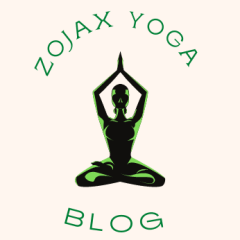How hard is Yoga pose Handstand (Adho Mukha Vrksasana )?
The greatest challenge and difficulty to practicing Yoga pose Handstand (Adho Mukha Vrksasana ), like with most advanced poses (on the head and elbows), is the natural worry of falling. We first practice this advanced yogic pose against the wall until we have fully mastered keeping balance on our hands in order to overcome this difficulty and build self-confidence and a sense of security.
As demonstrated in the images below, we can prepare for this situation.
You might also like: Yoga pose Shoulder stand (Sarvangasana)
Hand photo created by yanalya – www.freepik.com
Image by yanalya on Freepik
We make sure that our hands are away from the wall for the length of our feet and less, not more. If we keep our hands away from the wall and lean our feet on it, the spine will bend too much, which leads to great strain and tension on the body, and maintaining balance is difficult.
Image by yanalya on Freepik
Step by step instruction
- Perform the yoga pose Adho mukha svanasana (Downward-Facing Dog) with the palms away from the wall, approximately the length of the feet. We enter the position completely; fasten the shoulder blades to the back and pull-Yoga-positions-exercises. Standing on the arms, we prepare them towards the tailbone; we turn the upper arms outwards and then push them inwards to secure the shoulders and spread the shoulder blades. We press the palms and the roots of both index fingers firmly onto the ground. Keep your palms and elbows shoulder-width apart, with arms fully extended.
- While we bend the left knee and step with the same foot for the length of the foot towards the wall, while we activate and stretch the right leg, we push the heel towards the ground. Leaning on the left foot, transfer the weight of the body to the left leg and arms, press the right foot to the ground and swing strongly with the right foot in a wide arc, lifting it towards the wall, separating the left foot and lifting the left leg at the same time. In this position, we lean our heels against the wall.
- We press the shoulder blades even more along the back and lift the head (threads) back and up, making sure that the root of the skull does not put pressure on the back of the neck. If it will make it easier for us to hold our position, we can lean the threads against the wall, which also depends on the distance of the body from the wall. We soften the neck by maintaining a depression in it and directing our gaze towards the ground. We slowly lift one foot after the other from the wall and practice balancing without leaning on the wall. We only use our hands. Stretch your legs and point your toes at the ceiling.
- For a start, we stay in the position for 10-15 seconds, breathing deeply and evenly. Gradually extend the time you stay in it to 1 minute. When leaving the stand, we make sure that the weight of the body does not fall on the shoulders and that we do not burden them. So we keep the shoulder blades raised and spread and return one foot to the ground with the exhale. Rest in the Uttanasana position for 30 seconds to 1 minute.
- After mastering the balance in this position, without leaning your feet on the wall, we begin to practice standing on our hands in the middle of the room without the help of the wall.
Notes:
If it is difficult for us to keep the elbows straight in this position, we recommend fastening them by wrapping a belt around the upper arms just above the elbows. We make sure our elbows are shoulder-width apart.
Therapeutic benefits of Handstand (Adho Mukha Vrksasana)
- Mild depression
Benefits of Handstand (Adho Mukha Vrksasana )
- Strengthens shoulders, arms, wrists
- Stretches the stomach
- Improves the sense of balance
- Calms the brain, helps relieve stress and mild depression
- Contributes to the overall development of the body
Contraindications, warnings and precautions:
- Back, shoulder, neck injuries
- Headache
- Heart disease
- High blood pressure
- Menstruation
- During pregnancy we can continue to practice this asana, but only if we have a lot of experience






